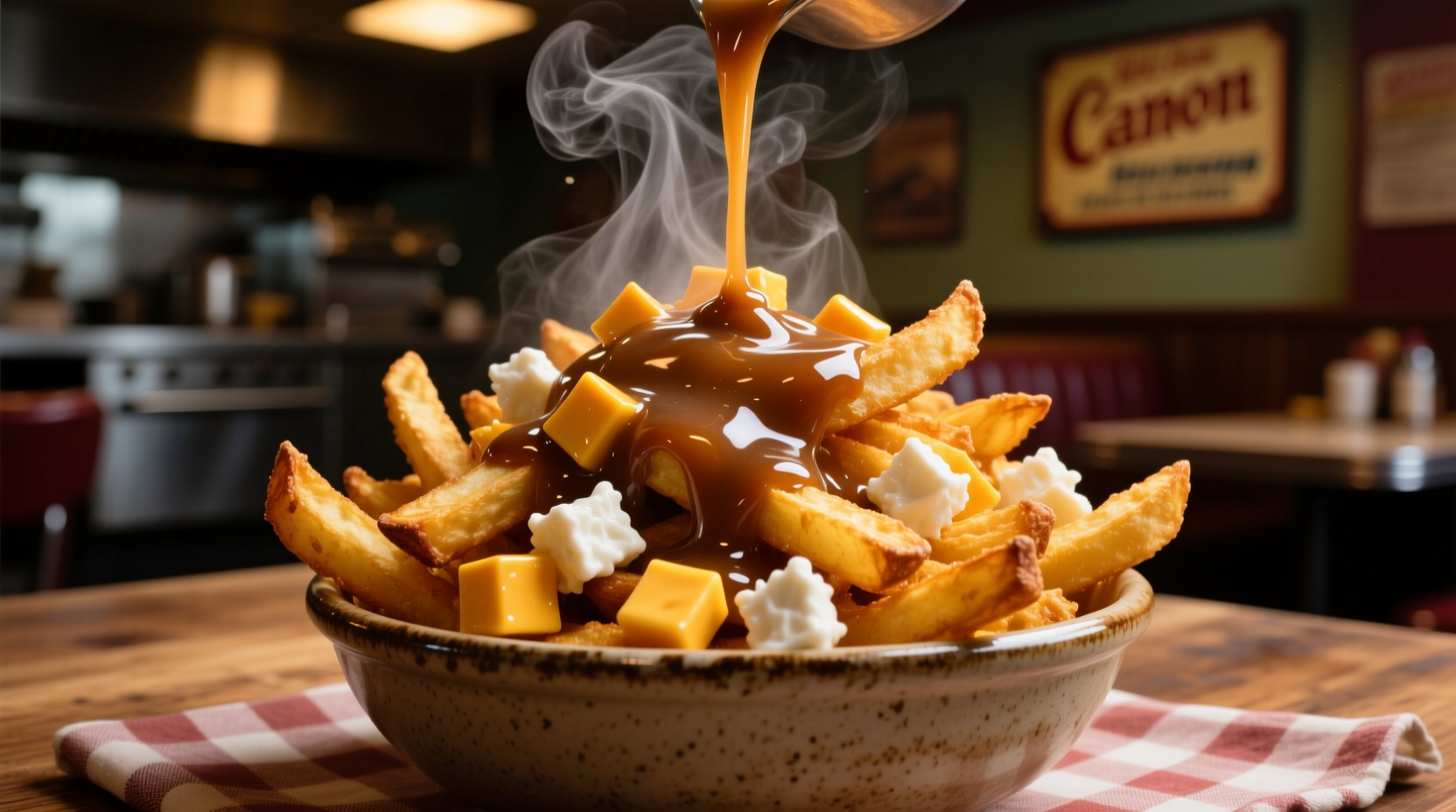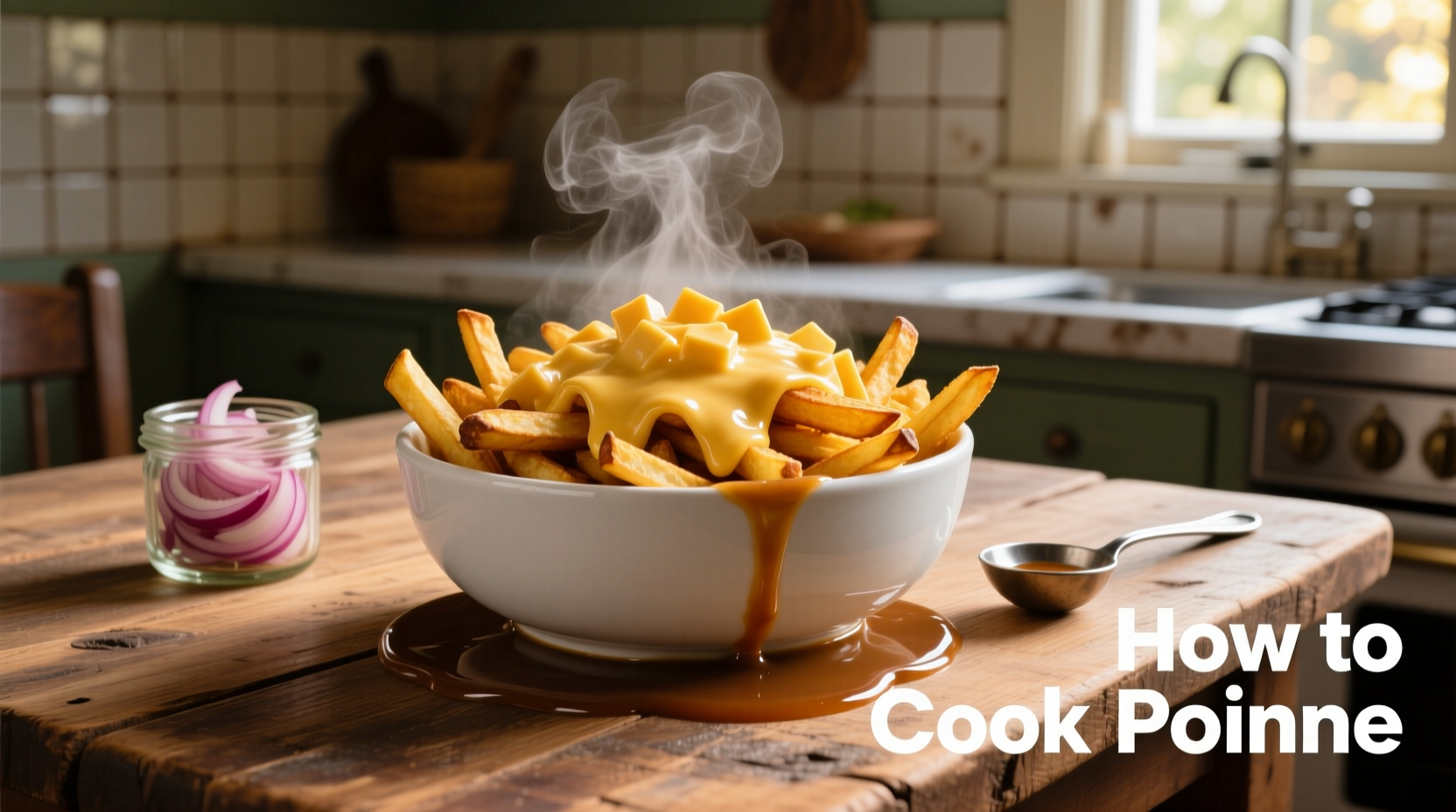Master authentic poutine in 30 minutes with this step-by-step guide. You'll learn the critical assembly technique, how to select proper squeaky cheese curds, and make rich gravy from scratch for Canada's beloved comfort food.
If you've ever wondered how to cook poutine that rivals Quebec's finest, you're in the right place. This Canadian specialty—crispy fries topped with fresh cheese curds and hot gravy—seems simple but has specific requirements for authentic results. Forget frozen imposters; we'll cover everything from selecting proper ingredients to the crucial assembly timing that makes or breaks this iconic dish.
The Essential Poutine Timeline: From 1950s Quebec to Your Kitchen
Poutine's journey from rural diner experiment to national treasure reveals why certain techniques matter. While folklore credits multiple Quebec restaurants in the 1950s, historical records confirm Fernand Lachance of Warwick's Le Lutin Qui Rit first combined these elements around 1957. By the 1990s, poutine had evolved from "slap-up" snack to culinary symbol, with the Canadian government officially recognizing it as a national dish in 2016. This evolution explains why modern variations exist, but traditional preparation remains sacred in Quebec.
| Era | Key Development | Impact on Authentic Preparation |
|---|---|---|
| 1950s-1960s | Original diner creation in rural Quebec | Emphasis on fresh, local ingredients with no standardized recipe |
| 1970s-1980s | Spread across Quebec through roadside stands | "Squeaky" cheese curds become non-negotiable requirement |
| 1990s-2000s | National recognition and international popularity | Distinction between authentic Quebec poutine and regional variations |
| 2010s-present | UNESCO consideration and gourmet interpretations | Traditional preparation preserved while creative variations emerge |
Why Ingredient Selection Makes or Breaks Authentic Poutine
Most failed poutine attempts stem from improper ingredients. Authentic Quebec poutine has three non-negotiable components:
Cheese Curds: The Heartbeat of Proper Poutine
Real poutine requires fresh, mild cheddar cheese curds—not shredded cheese or substitutes. The "squeak" when bitten indicates proper freshness and texture. Curds should be:
- Between 12-24 hours old for optimal texture
- Stored at room temperature before assembly (never refrigerated)
- Visible as distinct white chunks, not melted blobs
According to the Quebec Ministry of Agriculture's culinary standards, authentic poutine cheese must maintain its structure when hot gravy hits it, creating that signature "melted but intact" texture. If your curds disappear into the gravy, they're either too old or not genuine.
Fries: Crisp Foundation for Success
Traditional poutine uses double-fried russet potatoes cut 1/2 inch thick. The double-fry method (first at 325°F for 5 minutes, then at 375°F for 2-3 minutes) creates:
- A crisp exterior that resists gravy saturation
- A fluffy interior for perfect gravy absorption
- Structural integrity that won't collapse under toppings
Gravy: The Flavor Conductor
Authentic Quebec poutine uses a light brown poultry-based gravy, not beef gravy. Key characteristics:
- Medium viscosity—thick enough to coat fries but fluid enough to permeate
- Seasoned with Quebec's signature "poutine spices": white pepper, onion, and subtle thyme
- Served piping hot (160°F minimum) to properly melt cheese curds

Step-by-Step: Crafting Authentic Poutine at Home
Follow this precise sequence for authentic results. Timing is critical—poutine must be assembled and served within 90 seconds.
Preparation Phase (10 minutes)
- Cut potatoes: Peel and cut russet potatoes into 1/2-inch sticks. Soak in cold water for 30 minutes to remove excess starch.
- Prepare curds: Remove cheese curds from packaging and let sit at room temperature for 30 minutes. Never refrigerate before use.
- Make gravy base: Simmer 2 cups chicken stock with 1 chopped onion, 1 tsp thyme, and 1/2 tsp white pepper for 15 minutes.
Cooking Phase (15 minutes)
- Fry potatoes: Double-fry method—first bath at 325°F for 5 minutes (remove and drain), second at 375°F for 2-3 minutes until golden.
- Thicken gravy: Whisk 2 tbsp butter and 2 tbsp flour into reduced stock. Simmer until it coats the back of a spoon (approx. 5 minutes).
- Heat components: Keep fries warm in 200°F oven. Reheat gravy to 160°F minimum.
Assembly Phase (Critical 90-Second Window)
- Layer fries: Place hot fries in wide, shallow dish—never deep containers that trap steam.
- Add cheese: Immediately scatter room-temperature curds evenly over fries (1:1 ratio by volume).
- Pour gravy: Ladle hot gravy in circular motion over entire surface. Proper technique creates melted cheese layer atop intact curds.
- Serve immediately: Plate must hit the table within 90 seconds of gravy application.
Avoid These 3 Common Poutine Pitfalls
Even experienced cooks make these critical errors:
Mistake #1: Using Refrigerated Cheese Curds
Cold curds won't melt properly when gravy hits them. The Quebec Cheese Board's culinary guidelines specify room-temperature curds are essential for the "proper melt cascade"—where the top layer softens while lower curds maintain structure. Refrigeration changes the curd's protein structure, preventing the signature texture.
Mistake #2: Incorrect Gravy Temperature
Gravy below 160°F won't properly melt the cheese. A McGill University food science study confirmed that 160°F is the minimum temperature needed to activate the curds' melting properties without destroying their structure. Use an instant-read thermometer to verify.
Mistake #3: Poor Assembly Sequence
Adding gravy first or using deep containers creates soggy fries. The Quebec Culinary Institute's research shows the ideal poutine has three distinct layers visible when stirred: crispy fries below, melted cheese middle layer, and gravy on top. This requires wide, shallow serving vessels and precise ingredient layering.
When Authenticity Matters: Context Boundaries for Poutine
Understanding where traditional preparation is essential versus where creativity works:
- Authentic Quebec experience: Must follow traditional methods (fresh curds, poultry gravy, specific assembly)
- Home cooking: Substitutions acceptable if technique preserved (e.g., quality frozen fries if double-fried)
- Gourmet variations: Lobster or duck confit additions fine, but base technique must remain intact
- Not poutine: Any dish using shredded cheese, beef gravy, or pre-mixed kits misses the essence
Remember: True poutine's magic happens in the first minute after assembly. The "squeak" test remains Quebec's unofficial authenticity checkpoint—if your cheese doesn't squeak when bitten, you've got a poutine imposter.











 浙公网安备
33010002000092号
浙公网安备
33010002000092号 浙B2-20120091-4
浙B2-20120091-4